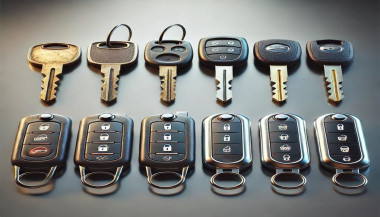If your car key shell is cracked, worn, or the buttons no longer press properly, replacing it with a new shell is often the most affordable and effective solution. But one major challenge stands in the way: figuring out exactly which replacement shell you need. With so many variations in blade types, button layouts, and internal compatibility, it’s easy to buy the wrong part—and waste both time and money.
This guide breaks down how to identify the correct key shell for your car, so you can upgrade or replace your damaged remote housing without confusion.
Step 1: Identify Your Key Blade Type
One of the most important features is the key blade. Even within the same car brand, different models and years may use different blade types. Two of the most common are:
HU83 blade – Used by many Peugeot and Citroën models. It has a curved groove on both sides.
VA2 blade – Similar in appearance but has a flat groove instead of a curve.
Other types include TOY43, TOY47, and SIP22, often used in Toyota, Fiat, and other manufacturers. If you're unsure, comparing your blade side-by-side with online reference images helps avoid errors.
Tip: Never rely only on the number of buttons—focus on the blade profile first.
Step 2: Count and Match the Button Layout
Next, verify how many buttons your original key has, and in what layout. Common options include:
2 buttons: Lock / Unlock
3 buttons: Lock / Unlock / Trunk
Smart keys: May have a more complex layout or hidden emergency blade
Even a small difference in layout can prevent the rubber buttons from pressing the internal switches correctly.
Also check whether the button pad is integrated into the case or if it’s a separate piece. That may affect your fit.
Step 3: Check the Internal Electronics Placement
When swapping a shell, you’ll be transferring the circuit board and (in most cases) a transponder chip. The replacement case must have:
The same mounting points and slots
Space for the battery (check if yours is CR1620, CR2032, etc.)
A similar design to support the flip mechanism, if your original key has one
If the internal layout doesn’t match, your circuit board may not sit securely—or your buttons may not work.
Bonus tip: Open your old key carefully and take photos of the internal structure before ordering a shell.
Step 4: Consider the Key Type – Flip or Fixed
There are two main styles:
Flip keys: Blade folds into the case and pops out with a button press
Fixed blade keys: Blade is static and exposed
You must match your replacement with the original style, unless you're intentionally upgrading. Flip key conversions are popular, but they require extra parts and a bit more installation effort.
Step 5: Check the Model Compatibility List
Many key shells are marketed as being compatible with a range of car models. Look for a list that includes:
Your vehicle’s make and model
The production years (e.g., “Peugeot 207 2010–2014”)
Even then, cross-reference with your physical key—models change subtly across production years.
Step 6: Know What You're Not Getting
A replacement key shell typically does not include:
The circuit board (you must transfer it from your old key)
The transponder chip
A pre-cut blade (unless stated)
You’ll likely need to cut the new blade or reuse the old one if it's detachable.
Choosing the right replacement key shell doesn't have to be trial and error. By focusing on blade type, button layout, and internal structure, you can confidently find a case that fits your needs—and your key electronics.
It’s a simple fix that extends the life of your existing key without the cost of a full replacement. Just take your time, check the details, and match your original key carefully.
A few minutes of inspection now can save hours of hassle later.

 (1)_1742908010.jpg)
 (1)_1736344815.jpg)

_1736339090.jpg)
